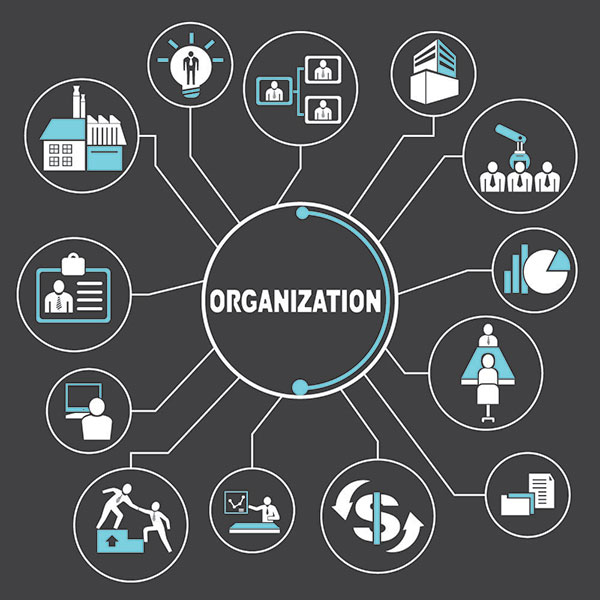Imagine walking into a bustling marketplace. You see vendors selling their wares, shoppers haggling over prices, and the rhythmic clang of metal as a blacksmith shapes a new tool. This vibrant scene is a testament to the complex interplay of human interactions, and at the heart of this intricate dance lies a powerful sociological concept: manifest function. But what exactly is it, and how does it shape the world around us?

Image: www.c4edu.org
We often focus on the obvious, the visible – the act of selling, the act of buying, the act of creation. Yet, underneath the surface, there exists an unseen layer of purpose, a deeper meaning that drives these actions. This is where manifest function steps in – it’s the intended and recognized consequence of a social phenomenon, the purpose that guides and shapes our social order. We’ll explore how this concept unveils the hidden intentions that drive our collective behavior, how it shapes our institutions, and how it impacts our daily lives.
Decoding the Essence of Manifest Function
The term “manifest function” was coined by renowned sociologist Robert K. Merton, who set out to understand the complex nature of social interactions and institutions. He proposed that every social action, every institution, has an intended purpose – a manifest function. This function is often explicit, readily observable, and accepted by most members of society. Think of the education system – its manifest function is to educate individuals, impart knowledge, and prepare them for the workforce.
The Power of Manifest Function in Shaping Our World
The influence of manifest function extends far beyond the confines of a classroom. It weaves its way into every aspect of our social fabric:
1. Institutions: Each institution, from government agencies to religious organizations, has its own set of manifest functions. The government aims to ensure public safety, provide essential services, and maintain order. Religious institutions seek to provide spiritual guidance, promote moral values, and foster a sense of community.
2. Social Norms: The rules and expectations that govern our behavior, often referred to as social norms, also have manifest functions. They promote cooperation, maintain order, and reduce uncertainty in our interactions. Consider the social norm of wearing clothes – it serves a manifest function of maintaining decency and protecting us from the elements.
3. Social Groups: Even within social groups, manifest functions guide their formation and activities. A sports team, for example, aims to win games, build camaraderie, and promote physical fitness.
Unveiling the Hidden Truths: Manifest Function in Action
The true power of manifest function lies in its ability to reveal the underlying motivations that drive social behavior:
1. The Family: The family unit, traditionally viewed as a bedrock of society, serves several manifest functions, including providing emotional support, nurturing children, and transmitting cultural values.
2. The Workplace: The workplace, a space for economic activity, fulfills the manifest functions of generating income, providing goods and services, and fostering innovation.
3. The Legal System: The legal system aims to ensure justice, protect individual rights, and maintain order within society.

Image: www.studocu.com
The Importance of Understanding Manifest Function
By comprehending the concept of manifest function, we gain a deeper understanding of our social world:
1. Informed Decision Making: It allows us to identify the intended consequences of our actions and policy decisions, leading to more informed and effective outcomes.
2. Social Awareness: It helps us recognize the underlying motivations and purposes behind institutions and social practices, promoting a more nuanced understanding of society.
3. Empowerment: It empowers us to critically examine social structures and challenge those that fail to achieve their intended purposes.
Expert Insights and Actionable Tips
Sociologists like Dr. Jennifer Lee, a renowned expert on the sociology of family, emphasize the importance of critically evaluating manifest functions. She argues that it is essential to recognize that even well-intentioned social structures can have unintended consequences, what Merton called “latent functions.”
To apply this concept in your daily life:
- Observe your surroundings: Pay attention to the hidden purposes behind social interactions and institutions.
- Think critically: Question the intended consequences of social policies and practices.
- Advocate for change: Challenge social structures that fail to fulfill their manifest functions.
Sociology Manifest Function
https://youtube.com/watch?v=LcluY6UsVXY
Conclusion: Embracing the Complexity of the Social World
Understanding the concept of manifest function is akin to peering into the soul of society. It reveals the intricate web of intentions and purposes that shape our collective behavior. It invites us to see beyond the surface, to recognize the hidden forces that guide our social interactions. By engaging with this powerful concept, we become more informed, more critical thinkers, and more active participants in shaping our world. Together, we can use this knowledge to build a more equitable and purposeful society. Now, with this newfound understanding, explore further into the rich landscape of sociology, where you’ll uncover even more fascinating insights into the fabric of human connection.






